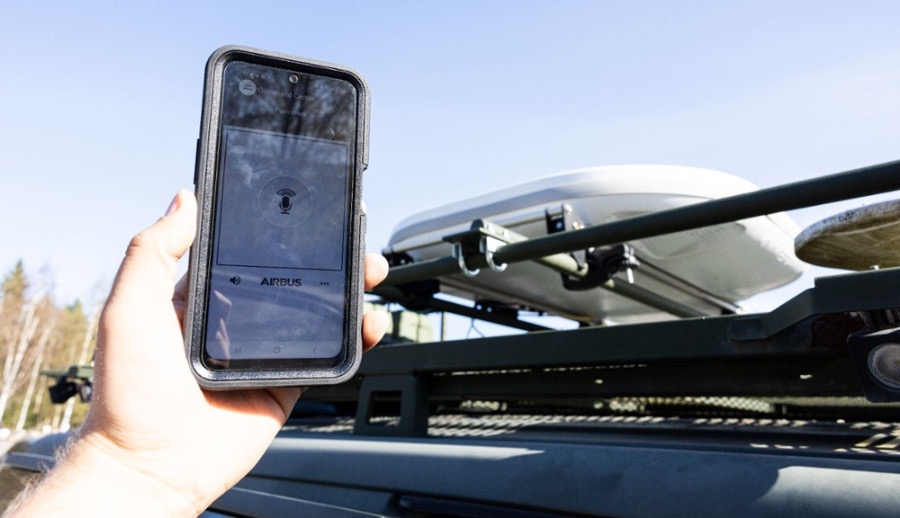
Airbus demonstrated its Agnet over Satcom solution to public safety and defence organisations in Oulu, Finland on 23 May as part of the Celtic-Next AINET-ANTILLAS research project which aims to accelerate Europe’s digital transformation.
The demonstration showcased how low-latency satellite communications of the OneWeb Low Earth Orbit (LEO) satellite constellation can support professional and government users to extend critical communications coverage and augment capacity in difficult-to-serve geographies. New satellite terminals support mobility, whether it be on a moving vehicle on the road, an aircraft in-flight, or a ship at sea. The demonstration in Finland focused on the performance of the mobile satellite link providing connectivity to local field operations using moving vehicles.
Agnet over Satcom offers added resilience and extended coverage and capacity for professional users, allowing them to continue to communicate without interruption, even in the most demanding of situations. In mission-critical operations, fast, reliable, and available connectivity is essential whenever and wherever the operation takes place. Deployable networks are a good choice, especially in rural areas, where coverage and capacity can be limited.
“Finland has the best terrestrial networks in the world. And 99% of the time, these networks are good enough. However, for users such as organisations that maintain the security, sovereignty, and stability of society, “close enough” is not sufficient. We view satellite communication, especially Low Earth Orbit (LEO) services, as a valuable way to augment these world-class terrestrial networks, much more so than before. Our customers operate nationwide, and Geostationary Earth Orbit (GEO) satellites just can't deliver that.” said Antti Kauppinen, CTO Erillisverkot.
As public information on the achievable performance of LEO satellite systems is very limited, prior to the customer demonstrations in Oulu, Airbus Public Safety and Security carried out a Quality of Service (QoS) measurement campaign, in close collaboration with the VTT Technical Research Centre of Finland, coordinator of the Finnish consortium of the AINET-ANTILLAS project.
“The emerging LEO satellite systems have raised interest in many public and industrial sectors. It was therefore essential to have comprehensive information on the capacity of satellite services, particularly for critical services. These demonstrations of low-latency satellite services on a moving vehicle enabled us to complete our Quality of Service (QoS) measurement campaign, the Oulu one being the third in a series which spanned two years. The LEO satellite testing trials enabled us to develop measurement methods and technology assessment capabilities for our service offerings.” said Heli Kokkoniemi-Tarkkanen, Senior Scientist at VTT Technical Research Centre of Finland.
Combining critical communications and collaboration solutions, satellite services, and 5G and 6G technologies creates new, unprecedented features for professional users. “The research objectives Airbus Public Safety and Security has for the project are particularly related to IoT in advanced critical communication solutions during demanding field operations and the use of the latest low-latency satellite services with deployable networks. In particular, the cyber security of these systems is a topic of interest due to the stringent requirements of a demanding customer base.” said Clemens von Skwarczinsky, Head of Portfolio and Business Support for Airbus Public Safety and Security.
The demonstrations were part of the Celtic-Next AINET-ANTILLAS research project involving over 30 partners from Finland, France and Germany. Funded by Business Finland, the Finnish government organisation for innovation funding, AINET-ANTILLAS is a three-year research project ending in 2024.
